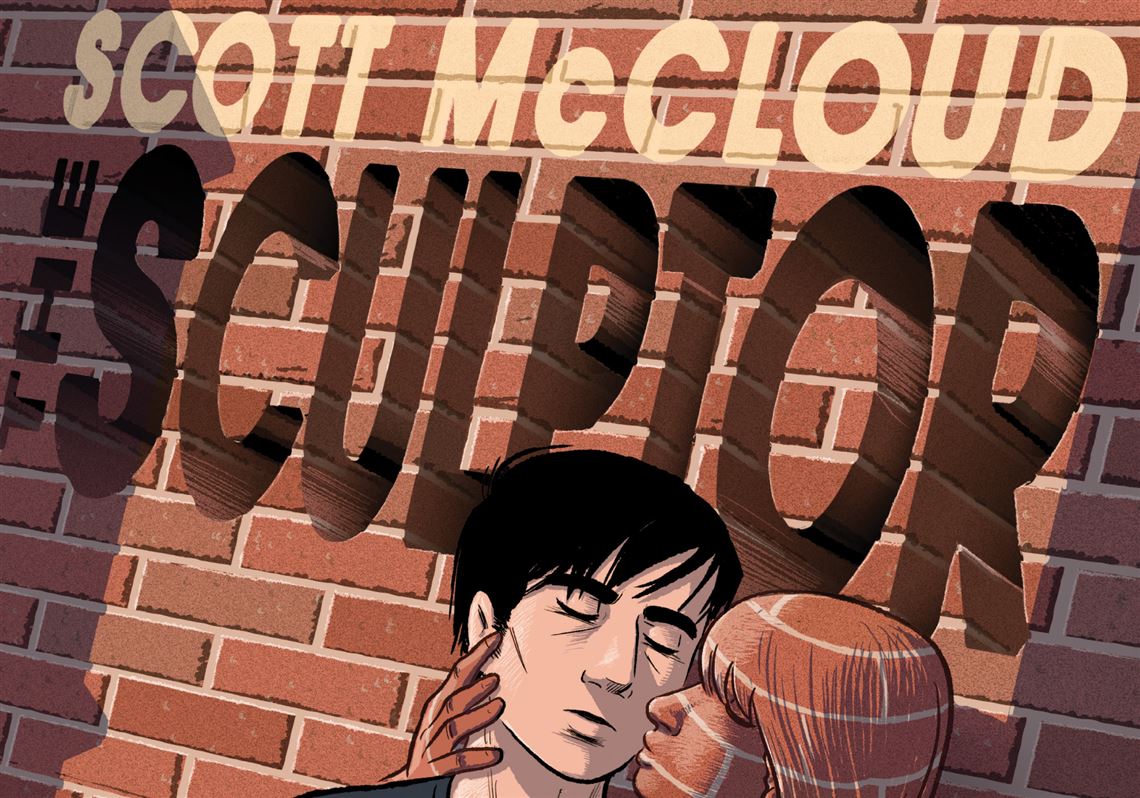Scott McCloud is best known for “Understanding Comics,” one of the first, and most seminal, attempts to analyze the art form of comics and what makes them work. Because of the ongoing impact of this book, as well as the two books that followed it, “Reinventing Comics” and “Making Comics,” it may be surprising to some at how few other comics Mr. McCloud has produced. In the 1980s he wrote and drew an under-appreciated series called ZOT!, and in 1998 released “The New Adventures of Abraham Lincoln,” an early experiment in computer graphics.
“The Sculptor” (First Second, $29.99), a nearly 500 page original graphic novel, is his triumphant return to comic book storytelling rather than comic book analysis. As tempting as it may be to evaluate this new work using his own rubric, for the average reader the real joy will come from simply engaging the story.
David Smith is a young sculptor who has had a brush with success, but feels stymied in his career, unsure of his abilities, and disdainful of the Art versus Commerce issues he encounters with galleries and critics. When asked what he would give for his art, Smith replies, “I’d give my life.” In a Faustian deal with Death, he does just that. He is given the ability to sculpt any material with his hands. Anything he can imagine he can create, quickly and accurately, in any material. The catch is that he only has 200 days of life left to do it.
And then he meets a girl.
From this basic premise Mr. McCloud creates a work of intricate artistic and emotional beauty.
Death has always been a companion to Smith. He is the last living member of his family. It is said that when we die our entire life flashes before our eyes. Smith’s sculptures are all attempts to capture these memories, some of them the smallest minutia of his life, fleeting moments that are only important to him. But in his desire to give form to these small moments he is missing the big ones going on right in front of him. His desire to create art out of his past is preventing him from creating a life in the present. Giving up his life doesn’t seem like a big deal. Not until he gets one.
As an artist and storyteller Mr. McCloud excels at capturing the small details of the everyday. He is content to let the art linger on the specifics of a setting without needing to rush forward to the next story point (making great use of what he defined in Understanding Comics as aspect-to-aspect panel transitions). His line work is clear and concise, allowing for an experimentation in storytelling form without diminishing the clarity of the narrative.
His understanding of human behavior permeates the entire narrative. His characters act and talk like people you know. They embody the strengths and weaknesses, insecurities and inconsistencies of real people. He conveys character and emotion with the subtlest change in facial expression, allowing body language to say as much as his well-chosen words.
There are liminal moments where art and life overlap. “The Sculptor” makes the point that some of the most mundane moments, when relived and re-contextualized, can be illuminated as well. While Mr. McCloud will no doubt be remembered for his contributions in understanding comics, “The Sculptor” shows that his efforts are in the service of understanding life.
Wayne Wise is a freelance writer and novelist living in Lawrenceville (tetroc@gmail.com).
First Published: February 15, 2015, 5:00 a.m.













